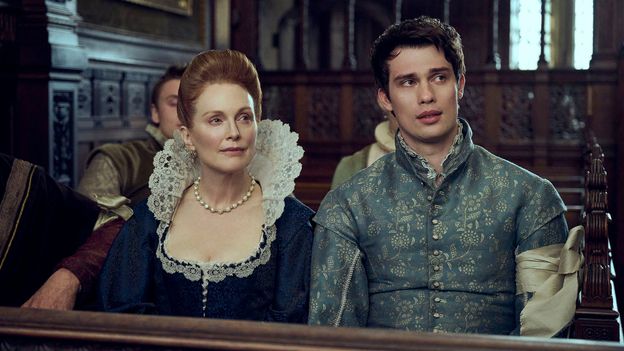George Villiers was murdered three years after James died, aged 35. He was stabbed to death by John Felton, a discharged army officer who felt that he had been overlooked for a promotion by the Duke of Buckingham (whose reputation had soured enormously in more recent years). In the intervening centuries the Villiers family have remained woven through British royal and political life – from the mistress of Charles II to a Vicereine of India to a current sitting Tory MP. In fact, according to Gerald Malcolm Thomson, George’s father can now be traced as a common ancestor for 16 different British Prime Ministers, including, most recently, David Cameron. Once cemented, aristocratic power rarely wanes. The higher you climb, the show implies, the further there is to fall, but it may make the landing softer for future generations.
The scene I watched last spring being filmed at Hatfield House, standing in for James’s London palace, appears in the third episode, and sees Mary and George returning to court – attention lavished on them by the king. It is a triumphant moment of ascendancy. Before Moore, Curran and Galitzine arrive, the extras are arranged in the marble hall, instructed on their blocking and suggestive glances and whispers. The walls hold portraits of Queen Elizabeth I, Robert Cecil, and Mary, Queen of Scots. Upstairs, a life sized statue of King James stands, surveying the drawing room. History crowds especially close here, the dead revived while their ancestors watch over them.
Mary & George is available now on Sky Atlantic and NOW in the UK, and premieres on Starz in the US on 5 April
– videos and can’t-miss news delivered to your inbox every Friday.
If you would like to comment on this story or anything else you have seen on Culture, head over to our Facebook page or message us on Twitter.


